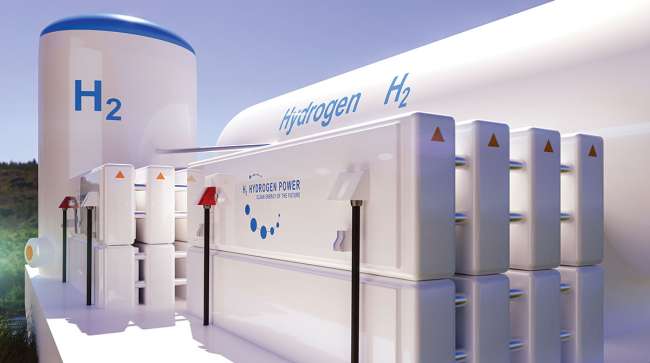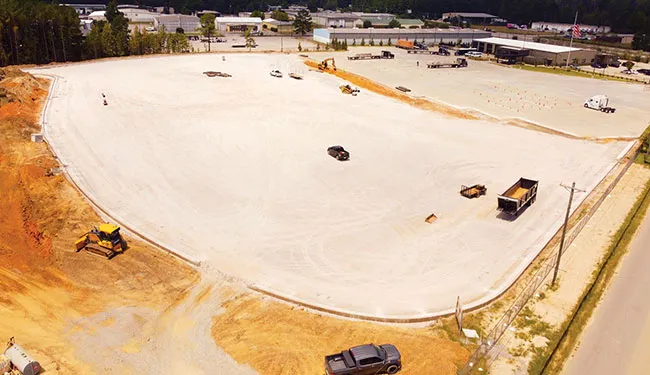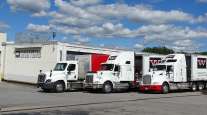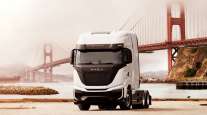Staff Reporter
Hydrogen Hubs Central to State Government Action in 2023

[Stay on top of transportation news: Get TTNews in your inbox.]
Governors took action in 2023 to prepare their states for the future, competing for funding to build government-backed hydrogen hubs and battling their neighbors to lure economic development projects that promise to create or expand distribution, warehousing and logistics operations.
The past several months saw states join with private industry, universities, utility companies and other entities to form consortiums to get a piece of the U.S. Department of Energy’s $7 billion pie by grabbing a share of the federal government’s plan to establish six to 10 regional hydrogen hubs. The goal for the hubs is create a new energy form using hydrogen to decarbonize emissions from heavy-polluting industries and heavy-duty transportation.
At the start of 2023, secrecy prevailed among some state contenders that opted not to publicize news if they had submitted hydrogen hub proposals to DOE by the April 7 deadline. However, several states let it be known that they had handed in their proposal paperwork to DOE on time, and even early in some cases.
Among the winners that publicized their formal entry in the selection phase of the hydrogen hub race were California’s Alliance for Renewable Clean Hydrogen Energy Systems, the Midwest Alliance for Clean Hydrogen (Illinois, Indiana and Michigan) and the Pacific Northwest Hydrogen Hub (Washington, Oregon and Montana).

Granholm
Other winners jointly announced Oct. 13 by President Joe Biden and Energy Secretary Jennifer Granholm were the Mid-Atlantic Hydrogen Hub (Pennsylvania, Delaware and New Jersey), the Appalachian Regional Hydrogen Hub (West Virginia, Ohio and Pennsylvania), the Texas-led HyVelocity Hydrogen Hub and the Heartland Hydrogen Hub (Minnesota, North Dakota and South Dakota).
Those failing to make the final cut included the Northeast Regional Clean Hydrogen Hub (Connecticut, New York, New Jersey, Maine, Massachusetts, Rhode Island and Vermont), the Mid-Continent Clean Hydrogen Hub (Iowa, Missouri and Nebraska) and the Western Interstate Hydrogen Hub (Colorado, New Mexico, Utah and Wyoming).
Did You Know?
Hydrogen is not an energy source, so it must be made from compounds that contain it before it can be used to carry energy to be stored and delivered. It can be created, for example, by splitting water into hydrogen and oxygen using sunlight and semiconductors or electrolyzers.
Although the development of widespread hydrogen fuel production and use in the U.S. remains in its infancy, DOE intends for its seven hubs to produce a combined 3 million metric tons of hydrogen annually while reducing 25 million metric tons of carbon emissions from end users each year.
A major aspect of hydrogen production is to use it in fuel cell vehicles to replace diesel trucks.
“The overall challenge to hydrogen production is cost,” according to the DOE, which is developing ways to make hydrogen at $2 per kilogram by 2026 and at $1 a kilogram by 2031. In seven years, the government intends for the cost of onboard storage to be $9 per kilowatt-hour and $2 per kilogram for hydrogen delivery and dispensing.
The overall challenge to hydrogen production is cost.
U.S. Department of Energy
DOE’s initial national hydrogen strategy will focus on targeting high-impact hydrogen usage in three “difficult-to-decarbonize” economic sectors: transportation (medium- and heavy-duty vehicles, maritime, aviation and rail), industry (steelmaking, industrial heating and chemical manufacturing) and energy (storage, electricity generation and supplies of backup and stationary power).
Another state competition that unfolded this year and still is underway involves governors and their economic development agencies hoping to win much-desired corporate investment projects to create or expand logistics and warehouse/distribution operations.
More and more companies are expanding their footprints or creating new ones to move goods closer to their customers, who, during the pandemic, became accustomed to receiving e-commerce deliveries at their doorsteps quickly.

TMC is building a 36,000-square-foot operations and logistics office as well as a 66,000-square-foot maintenance facility next to its existing driver training center in Richland County, S.C. (TMC Transportation)
Businesses seeking to be within about a 200-mile radius for deliveries to their customers are able to pick and choose which state offers the best financial incentives. Competition is especially fierce among states with East Coast ports, such as South Carolina, Virginia, Georgia and North Carolina.
ERoad's Craig Marris gives advice on carving out a practical, effective road map to a greener and more efficient fleet. Tune in above or by going to RoadSigns.ttnews.com.
Companies can and do receive bundles of incentives in state economic development packages. It is common for one company that establishes a distribution/warehouse center in a state to receive tax breaks from the state, the county where the operations will be located and even the town, plus having that state’s employment office offer free job training and help onboarding new employees. In return, states relish the ability to create jobs paying wages that will have positive ripple effects through local and regional economies.
Appalachian-area states also can offer companies funds to create good-paying and skilled jobs in former coal mining areas where unemployment is high. Federal dollars can be added as other enhancements in economic development packages in former coal-producing areas to upskill people who lack work.
States this year that announced new or expanded warehouses and distribution centers included Arizona, Kentucky, Maryland, Mississippi, Montana, North Carolina, Oklahoma, South Carolina and Virginia.
Want more news? Listen to today's daily briefing above or go here for more info
Future e-commerce is expected to continue to fuel this business development trend. A U.S. Bureau of Labor Statistics analysis about employment projections through 2032 predicts that transportation and warehousing will be among the fastest-growing economic sectors for the coming decade.
“The growth of the digital economy is expected to support solid job growth across the information and transportation and warehousing sectors, both of which rank among the top five fastest-growing sectors,” BLS noted in an October forecast.





